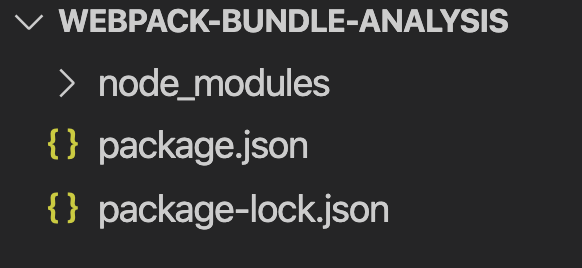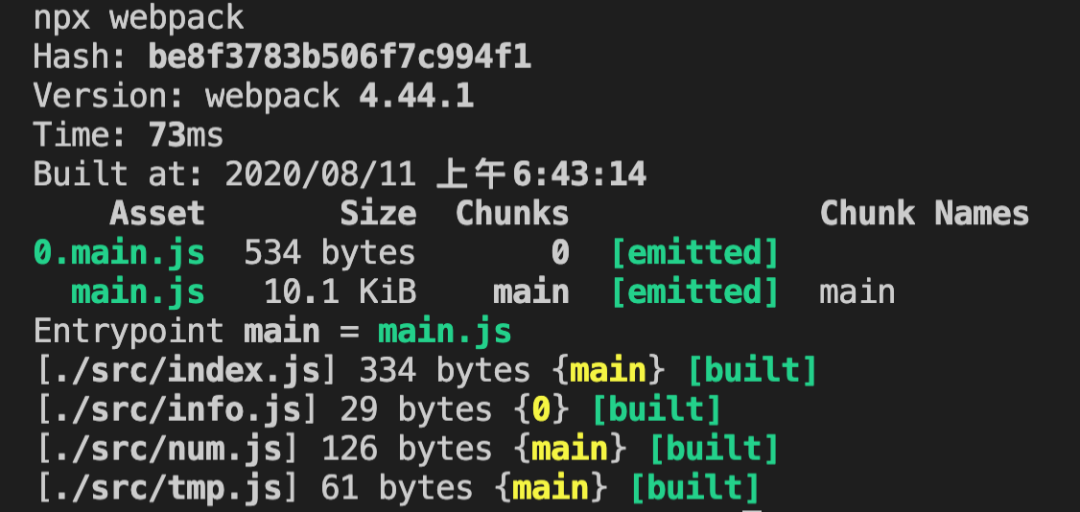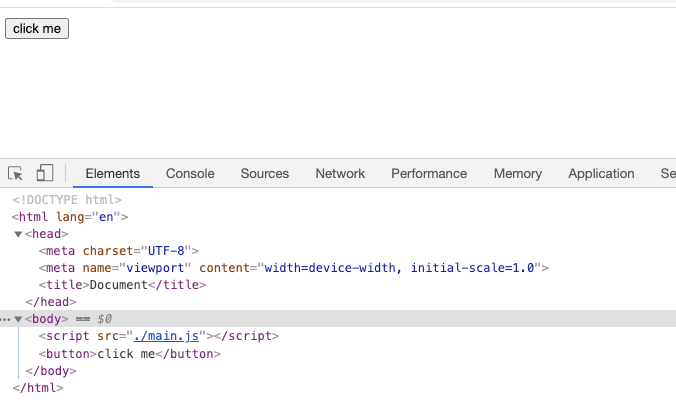【Webpack】878- 你的 import 被 webpack 编译成了什么?

本文作者:李永宁
本文链接:https://juejin.cn/post/6859569958742196237
某大厂面试题
面试官,问:
import moduleName from 'xxModule'和import('xxModule')经过webpack编译打包后最终变成了什么?在浏览器中是怎么运行的?
求职者,答:
嗯。。。,不好意思,我只知道
import可以用来加载模块,然后第二个import一般用在需要懒加载的地方,其它的就不知道了
这两个语句我们应该经常能看到,第一个import就不用说了,可以说现在的前端项目随处可见,第二个import可以在需要懒加载的地方看到,比如vue-router的懒加载配置,但是大家好像却从来都没太深究过这个东西。
前奏
import是es module提供的一个加载模块的方法,目前主流的浏览器也都支持,像现在比较火的vite就是利用了浏览器原生支持import的能力来实现的,当然它还有一个server端使用koa实现的。
我们都知道webpack的打包过程大概流程是这样的:
合并 webpack.config.js和命令行传递的参数,形成最终的配置解析配置,得到 entry入口读取入口文件内容,通过 @babel/parse将入口内容(code)转换成ast通过 @babel/traverse遍历ast得到模块的各个依赖通过 @babel/core(实际的转换工作是由@babel/preset-env来完成的)将ast转换成es5 code通过循环伪递归的方式拿到所有模块的所有依赖并都转换成 es5
从以上内容可以看出来,最终的代码中肯定是没有import语句的,因为es5就没有import;那么我们从哪去找答案呢?有两个地方,一是webpack源码,二是打包后的文件,对于今天的问题而言,后者更简单直接一些。
项目
现在我们来建一个测试项目
初始化项目
mkdir webpack-bundle-analysis && cd webpack-bundle-analysis && npm init -y && npm i webpack webpack-cli -D

webpack.config.js
const path = require('path')
module.exports = {
entry: './src/index.js',
// 为了利于分析打包后的代码,这里选择开发模式
mode: 'development',
output: {
path: path.resolve(__dirname, './dist'),
filename: 'main.js'
}
}
写代码,/src
/src/index.js
/**
* 入口文件,引入 print 方法,并执行
* 定义了一个 button 方法,为页面添加一个按钮,并为按钮设置了一个 onclick 事件,负责动态引入一个文件
*/
import { print } from './num.js'
print()
function button () {
const button = document.createElement('button')
const text = document.createTextNode('click me')
button.appendChild(text)
button.onclick = e => import('./info.js').then(res => {
console.log(res.log)
})
return button
}
document.body.appendChild(button())
/src/num.js
import { tmpPrint } from './tmp.js'
export function print () {
tmpPrint()
console.log('我是 num.js 的 print 方法')
}
/src/tmp.js
export function tmpPrint () {
console.log('tmp.js print')
}
/src/info.js
export const log = "log info"
打包
项目根目录执行
npx webpack

会看到多了一个 dist 目录,且看输出结果,main.js大家肯定都知道是什么,这个是我们在webpack.config.js中配置的输出的文件名,但是0.main.js呢?这是什么?我们也没配置,可以先想一下,之后我们从代码中找答案
模版文件
新建/dist/index.html文件,并引入打包后的main.js
<html lang="en">
<head>
<meta charset="UTF-8">
<meta name="viewport" content="width=device-width, initial-scale=1.0">
<title>Documenttitle>
head>
<body>
<script src = "./main.js">script>
body>
html>
在浏览器打开 index.html
Network

Console

Elements


可以看到index.html加载以后资源加载以及代码的执行情况,会发现我们写的代码中的同步逻辑均已执行,接下来看看异步逻辑(点击按钮),这里为了效果,点击之前分别清空了Network和Console两个标签的内容
Network

Console

Elements

大家注意看信息,点击按钮以后发生了什么?从表面看似乎是这样的:
点击按钮,在
html中动态添加了一个script标签,引入了一个文件(0.main.js),然后发送两个一个http请求进行资源加载,加载成功以后在控制台输出一段日志。
到这里其实有一部分的答案已经出来,
import('xxModule),它提供了一种懒加载的机制,动态往html中添加script`标签,然后加载资源并执行,那具体是怎么做的呢?
好了,现象我们也看完了,接下来我们去源码中找答案
源码分析
我们一步一步来拆解打包后的代码
首先,我们将打包后的代码进行折叠,如下
(function (modules) {
// xxxx
})({
// xxx
})
这段代码是不是很熟悉?就是一个自执行函数
函数参数
(function (modules) {
// xxxx
})({
// src/index.js 模块
"./src/index.js":
(function (module, __webpack_exports__, __webpack_require__) {
"use strict";
__webpack_require__.r(__webpack_exports__);
var _num_js__WEBPACK_IMPORTED_MODULE_0__ = __webpack_require__("./src/num.js");
Object(_num_js__WEBPACK_IMPORTED_MODULE_0__["print"])()
function button() {
const button = document.createElement('button')
const text = document.createTextNode('click me')
button.appendChild(text)
button.onclick = e => __webpack_require__.e(0)
.then(__webpack_require__.bind(null, "./src/info.js"))
.then(res => {
console.log(res.log)
})
return button
}
document.body.appendChild(button())
//# sourceURL=webpack:///./src/index.js?");
}),
// ./src/num.js 模块
"./src/num.js":
(function (module, __webpack_exports__, __webpack_require__) {
"use strict";
__webpack_require__.r(__webpack_exports__);
__webpack_require__.d(__webpack_exports__, "print", function () { return print; });
var _tmp_js__WEBPACK_IMPORTED_MODULE_0__ = __webpack_require__("./src/tmp.js");
function print() {
Object(_tmp_js__WEBPACK_IMPORTED_MODULE_0__["tmpPrint"])()
console.log('我是 num.js 的 print 方法')
}
//# sourceURL=webpack:///./src/num.js?");
}),
// /src/tmp.js 模块
"./src/tmp.js":
(function (module, __webpack_exports__, __webpack_require__) {
"use strict";
// eval("__webpack_require__.r(__webpack_exports__);\n/* harmony export (binding) */ __webpack_require__.d(__webpack_exports__, \"tmpPrint\", function() { return tmpPrint; });\nfunction tmpPrint () {\n console.log('tmp.js print')\n}\n\n//# sourceURL=webpack:///./src/tmp.js?");
__webpack_require__.r(__webpack_exports__);
__webpack_require__.d(
__webpack_exports__,
"tmpPrint",
function () {
return tmpPrint;
});
function tmpPrint() {
console.log('tmp.js print')
}
//# sourceURL=webpack:///./src/tmp.js?");
})
})
看到这里有没有很熟悉,再回想一下webpack的打包过程,会发现,webpack将所有的import moduleName from 'xxModule'都变成了一个Map对象,key为文件路径,value为一个可执行的函数,而函数内容其实就是模块中导出的内容,当然,模块自己也被webpack做了一些处理,接着往下进行。
从打包后Map对象中能找到我们代码中的各个模块,以及模块的内容,但是也多了很多不属于我们编写的代码,比如以__webpack_require__开头的代码,这些又是什么呢?其实是webpack自定义的一些方法,我们接着往下阅读
函数体
以下内容为打包后的完整代码,做了一定的格式化,关键地方都写了详细的注释,阅读时搜索“入口位置”开始一步一步的阅读,如果有碰到难以理解的地方可配合单步调试
/**
* modules = {
* './src/index.js': function () {},
* './src/num.js': function () {},
* './src/tmp.js': function () {}
* }
*/
(function (modules) { // webpackBootstrap
/**
* install a JSONP callback for chunk loading
* 模块加载成功,更改缓存中的模块状态,并且执行模块内容
* @param {*} data = [
* [chunkId],
* {
* './src/info.js': function () {}
* }
* ]
*/
function webpackJsonpCallback(data) {
var chunkIds = data[0];
var moreModules = data[1];
// add "moreModules" to the modules object,
// then flag all "chunkIds" as loaded and fire callback
var moduleId, chunkId, i = 0, resolves = [];
for (; i < chunkIds.length; i++) {
chunkId = chunkIds[i];
if (Object.prototype.hasOwnProperty.call(installedChunks, chunkId) && installedChunks[chunkId]) {
resolves.push(installedChunks[chunkId][0]);
}
// 这里将模块的加载状态改为了 0,表示加载完成
installedChunks[chunkId] = 0;
}
for (moduleId in moreModules) {
if (Object.prototype.hasOwnProperty.call(moreModules, moduleId)) {
// 执行模块代码
modules[moduleId] = moreModules[moduleId];
}
}
if (parentJsonpFunction) parentJsonpFunction(data);
while (resolves.length) {
resolves.shift()();
}
};
// The module cache, 模块缓存,类似于 commonJS 的 require 缓存机制,只不过这里的 key 是相对路径
var installedModules = {};
/**
* 定义 chunk 的加载情况,比如 main = 0 是已加载
* object to store loaded and loading chunks
* undefined = chunk not loaded
* null = chunk preloaded/prefetched
* Promise = chunk loading
* 0 = chunk loaded
*/
var installedChunks = {
"main": 0
};
// script path function, 返回需要动态加载的 chunk 的路径
function jsonpScriptSrc(chunkId) {
return __webpack_require__.p + "" + chunkId + ".main.js"
}
/**
* The require function
* 接收一个 moduleId,其实就是一个模块相对路径,然后查缓存(没有则添加缓存),
* 然后执行模块代码,返回模块运行后的 module.exports
* 一句话总结就是 加载指定模块然后执行,返回执行结果(module.exports)
*
* __webpack_require__(__webpack_require__.s = "./src/index.js")
*/
function __webpack_require__(moduleId) {
// Check if module is in cache
if (installedModules[moduleId]) {
return installedModules[moduleId].exports;
}
/**
* Create a new module (and put it into the cache)
*
* // 示例
* module = installedModules['./src/index.js'] = {
* i: './src/index.js',
* l: false,
* exports: {}
* }
*/
var module = installedModules[moduleId] = {
i: moduleId,
l: false,
exports: {}
};
/**
* Execute the module function
* modules['./src/index.js'] is a function
*/
modules[moduleId].call(module.exports, module, module.exports, __webpack_require__);
// Flag the module as loaded
module.l = true;
// Return the exports of the module
return module.exports;
}
// This file contains only the entry chunk.
// The chunk loading function for additional chunks
/**
*
*/
__webpack_require__.e = function requireEnsure(chunkId) {
var promises = [];
// JSONP chunk loading for javascript
// 从缓存中找该模块
var installedChunkData = installedChunks[chunkId];
// 0 means "already installed".
if (installedChunkData !== 0) {
// 说明模块没有安装
// a Promise means "currently loading".
if (installedChunkData) {
promises.push(installedChunkData[2]);
} else {
// setup Promise in chunk cache
var promise = new Promise(function (resolve, reject) {
installedChunkData = installedChunks[chunkId] = [resolve, reject];
});
promises.push(installedChunkData[2] = promise);
// start chunk loading, create script element
var script = document.createElement('script');
var onScriptComplete;
script.charset = 'utf-8';
// 设置超时时间
script.timeout = 120;
if (__webpack_require__.nc) {
script.setAttribute("nonce", __webpack_require__.nc);
}
// script.src = __webpack_public_path__ + chunkId + main.js, 即模块路径
script.src = jsonpScriptSrc(chunkId);
// create error before stack unwound to get useful stacktrace later
var error = new Error();
// 加载结果处理函数
onScriptComplete = function (event) {
// avoid mem leaks in IE.
script.onerror = script.onload = null;
clearTimeout(timeout);
var chunk = installedChunks[chunkId];
if (chunk !== 0) {
// chunk 状态不为 0 ,说明加载出问题了
if (chunk) {
var errorType = event && (event.type === 'load' ? 'missing' : event.type);
var realSrc = event && event.target && event.target.src;
error.message = 'Loading chunk ' + chunkId + ' failed.\n(' + errorType + ': ' + realSrc + ')';
error.name = 'ChunkLoadError';
error.type = errorType;
error.request = realSrc;
chunk[1](error);
}
installedChunks[chunkId] = undefined;
}
};
// 超时定时器,超时以后执行
var timeout = setTimeout(function () {
onScriptComplete({ type: 'timeout', target: script });
}, 120000);
// 加载出错或者加载成功的处理函数
script.onerror = script.onload = onScriptComplete;
// 将 script 标签添加到 head 标签尾部
document.head.appendChild(script);
}
}
return Promise.all(promises);
};
// expose the modules object (__webpack_modules__)
__webpack_require__.m = modules;
// expose the module cache
__webpack_require__.c = installedModules;
/**
* define getter function for harmony exports
* @param {*} exports = {}
* @param {*} name = 模块名
* @param {*} getter => 模块函数
*
* 在 exports 对象上定义一个 key value,key 为模块名称,value 为模块的可执行函数
* exports = {
* moduleName: module function
* }
*/
__webpack_require__.d = function (exports, name, getter) {
if (!__webpack_require__.o(exports, name)) {
Object.defineProperty(exports, name, { enumerable: true, get: getter });
}
};
/**
* define __esModule on exports
* @param {*} exports = {}
*
* exports = {
* __esModule: true
* }
*/
__webpack_require__.r = function (exports) {
if (typeof Symbol !== 'undefined' && Symbol.toStringTag) {
Object.defineProperty(exports, Symbol.toStringTag, { value: 'Module' });
}
Object.defineProperty(exports, '__esModule', { value: true });
};
// create a fake namespace object
// mode & 1: value is a module id, require it
// mode & 2: merge all properties of value into the ns
// mode & 4: return value when already ns object
// mode & 8|1: behave like require
__webpack_require__.t = function (value, mode) {
if (mode & 1) value = __webpack_require__(value);
if (mode & 8) return value;
if ((mode & 4) && typeof value === 'object' && value && value.__esModule) return value;
var ns = Object.create(null);
__webpack_require__.r(ns);
Object.defineProperty(ns, 'default', { enumerable: true, value: value });
if (mode & 2 && typeof value != 'string') for (var key in value) __webpack_require__.d(ns, key, function (key) { return value[key]; }.bind(null, key));
return ns;
};
// getDefaultExport function for compatibility with non-harmony modules
__webpack_require__.n = function (module) {
var getter = module && module.__esModule ?
function getDefault() { return module['default']; } :
function getModuleExports() { return module; };
__webpack_require__.d(getter, 'a', getter);
return getter;
};
// Object.prototype.hasOwnProperty.call
__webpack_require__.o = function (object, property) { return Object.prototype.hasOwnProperty.call(object, property); };
// __webpack_public_path__
__webpack_require__.p = "";
// on error function for async loading
__webpack_require__.oe = function (err) { console.error(err); throw err; };
/**
* 通过全局属性存储异步加载的资源项,打包文件首次加载时如果属性值不为空,则说明已经有资源被加载了,
* 将这些资源同步到installedChunks对象中,避免资源重复加载,当然也是这句导致微应用框架single-spa中的所有子应用导出的
* 包名需要唯一,否则一旦异步的重名模块存在,重名的后续模块不会被加载,且显示的资源是第一个加载的重名模块,
* 也就是所谓的JS全局作用域的污染
*
* 其实上面说的这个问题,webpack官网已经提到了
* https://webpack.docschina.org/configuration/output/#outputjsonpfunction
*/
var jsonpArray = window["webpackJsonp"] = window["webpackJsonp"] || [];
var oldJsonpFunction = jsonpArray.push.bind(jsonpArray);
jsonpArray.push = webpackJsonpCallback;
jsonpArray = jsonpArray.slice();
for (var i = 0; i < jsonpArray.length; i++) webpackJsonpCallback(jsonpArray[i]);
var parentJsonpFunction = oldJsonpFunction;
/**
* 入口位置
* Load entry module and return exports
*/
return __webpack_require__(__webpack_require__.s = "./src/index.js");
})
({
// 代码中所有的 import moduleName from 'xxModule' 变成了以下的 Map 对象
// /src/index.js 模块
"./src/index.js":
/**
* @param module = {
* i: './src/index.js',
* l: false,
* exports: {}
*
* @param __webpack_exports__ = module.exports = {}
*
* @param __webpack_require__ => 自定义的 require 函数,加载指定模块,并执行模块代码,返回执行结果
*
*/
(function (module, __webpack_exports__, __webpack_require__) {
"use strict";
/**
*
* define __esModule on exports
* __webpack_exports = module.exports = {
* __esModule: true
* }
*/
__webpack_require__.r(__webpack_exports__);
// 加载 ./src/num.js 模块
var _num_js__WEBPACK_IMPORTED_MODULE_0__ = __webpack_require__("./src/num.js");
Object(_num_js__WEBPACK_IMPORTED_MODULE_0__["print"])()
function button() {
const button = document.createElement('button')
const text = document.createTextNode('click me')
button.appendChild(text)
/**
* 异步执行部分
*/
button.onclick = e => __webpack_require__.e(0)
// 模块异步加载完成后,开始执行模块内容 => window["webpackJsonp"].push = window["webpackJsonp"].push = function (data) {}
.then(__webpack_require__.bind(null, "./src/info.js"))
.then(res => {
console.log(res.log)
})
return button
}
document.body.appendChild(button())
//# sourceURL=webpack:///./src/index.js?");
}),
// /src/num.js 模块
"./src/num.js":
/**
* @param module = {
* i: './src/num.js',
* l: false,
* exports: {}
*
* @param __webpack_exports__ = module.exports = {}
*
* @param __webpack_require__ => 自定义的 require 函数,加载指定模块,并执行模块代码,返回执行结果
*
*/
(function (module, __webpack_exports__, __webpack_require__) {
"use strict";
/**
*
* define __esModule on exports
* __webpack_exports = module.exports = {
* __esModule: true
* }
*/
__webpack_require__.r(__webpack_exports__);
/**
* module.exports = {
* __esModule: true,
* print
* }
*/
__webpack_require__.d(__webpack_exports__, "print", function () { return print; });
// 加载 ./src/tmp.js 模块
var _tmp_js__WEBPACK_IMPORTED_MODULE_0__ = __webpack_require__("./src/tmp.js");
function print() {
Object(_tmp_js__WEBPACK_IMPORTED_MODULE_0__["tmpPrint"])()
console.log('我是 num.js 的 print 方法')
}
//# sourceURL=webpack:///./src/num.js?");
}),
// /src/tmp.js 模块
"./src/tmp.js":
/**
* @param module = {
* i: './src/num.js',
* l: false,
* exports: {}
*
* @param __webpack_exports__ = module.exports = {}
*
* @param __webpack_require__ => 自定义的 require 函数,加载指定模块,并执行模块代码,返回执行结果
*
*/
(function (module, __webpack_exports__, __webpack_require__) {
"use strict";
/**
*
* define __esModule on exports
* __webpack_exports = module.exports = {
* __esModule: true
* }
*/
__webpack_require__.r(__webpack_exports__);
/**
* module.exports = {
* __esModule: true,
* tmpPrint
* }
*/
__webpack_require__.d(__webpack_exports__, "tmpPrint", function () { return tmpPrint; });
function tmpPrint() {
console.log('tmp.js print')
}
//# sourceURL=webpack:///./src/tmp.js?");
})
});总结
经过以上内容的学习,相比对于一开始的问题,答案呼之欲出了吧。
面试官,问:
import moduleName from 'xxModule'和import('xxModule')经过webpack编译打包后最终变成了什么?在浏览器中是怎么运行的?
求职者,答:
import经过webpack打包以后变成一些Map对象,key为模块路径,value为模块的可执行函数;
代码加载到浏览器以后从入口模块开始执行,其中执行的过程中,最重要的就是
webpack定义的__webpack_require__函数,负责实际的模块加载并执行这些模块内容,返回执行结果,其实就是读取Map对象,然后执行相应的函数;
当然其中的异步方法(import('xxModule'))比较特殊一些,它会单独打成一个包,采用动态加载的方式,具体过程:当用户触发其加载的动作时,会动态的在
head标签中创建一个script标签,然后发送一个http请求,加载模块,模块加载完成以后自动执行其中的代码,主要的工作有两个,更改缓存中模块的状态,另一个就是执行模块代码。

回复“加群”与大佬们一起交流学习~
点击“阅读原文”查看 100+ 篇原创文章
